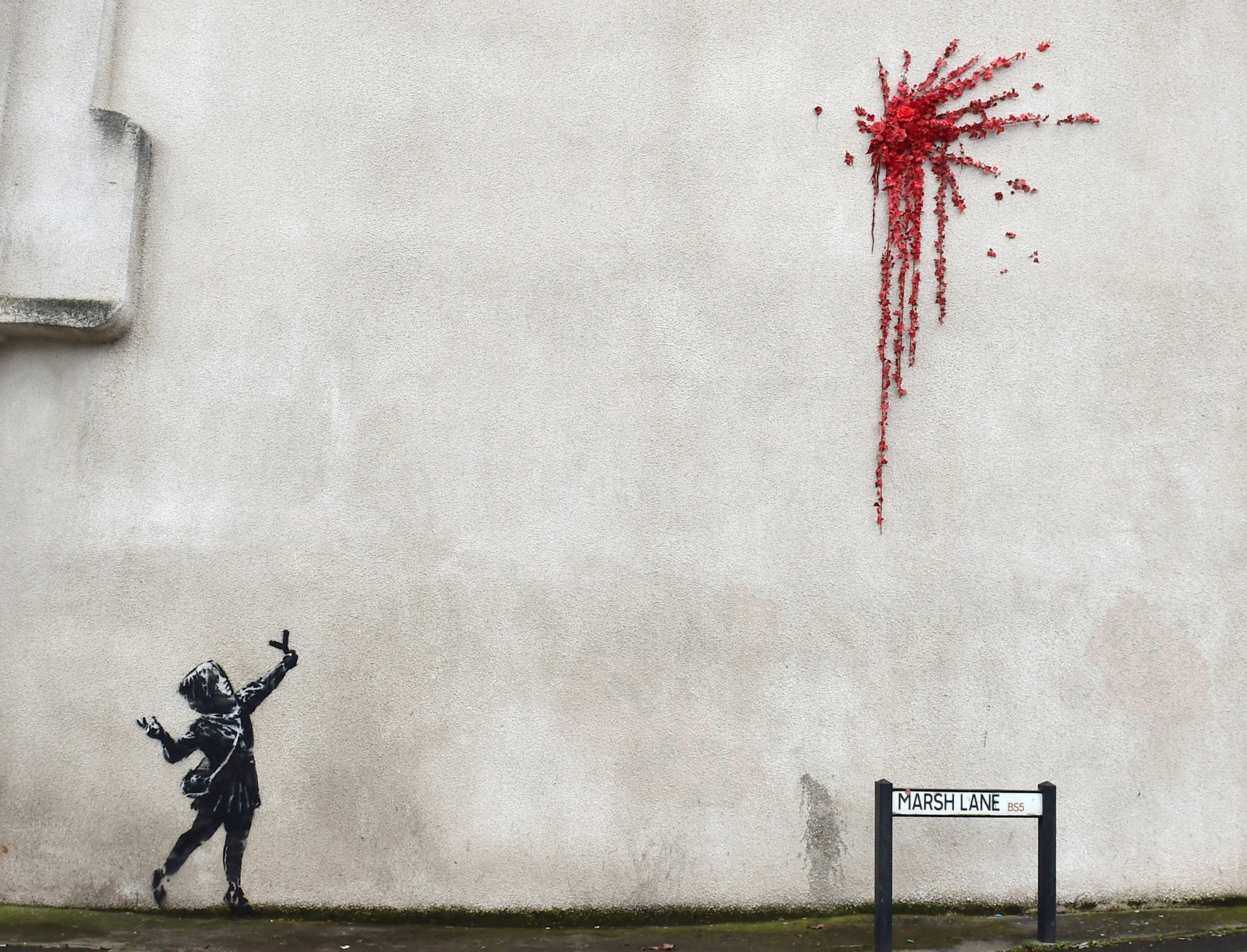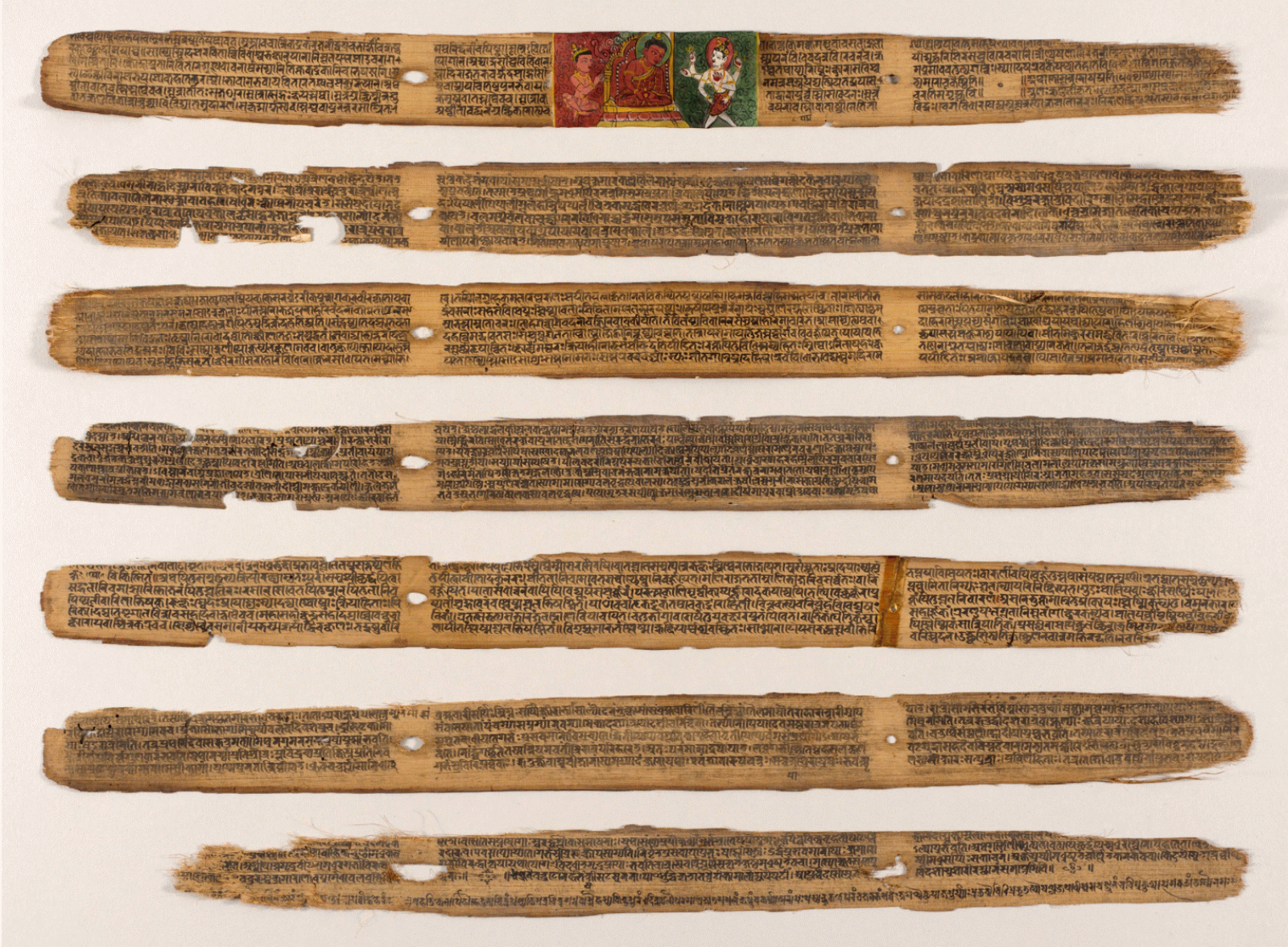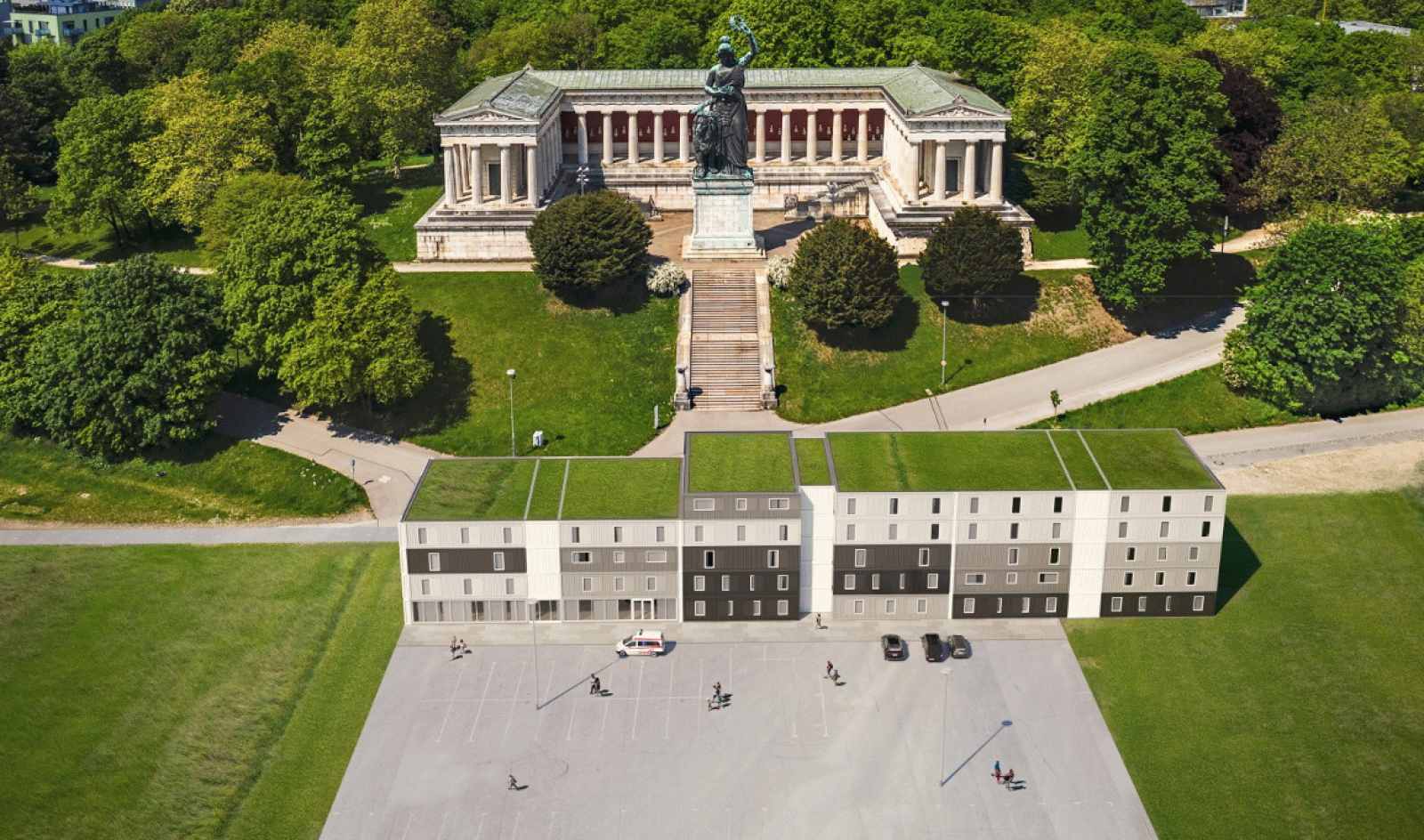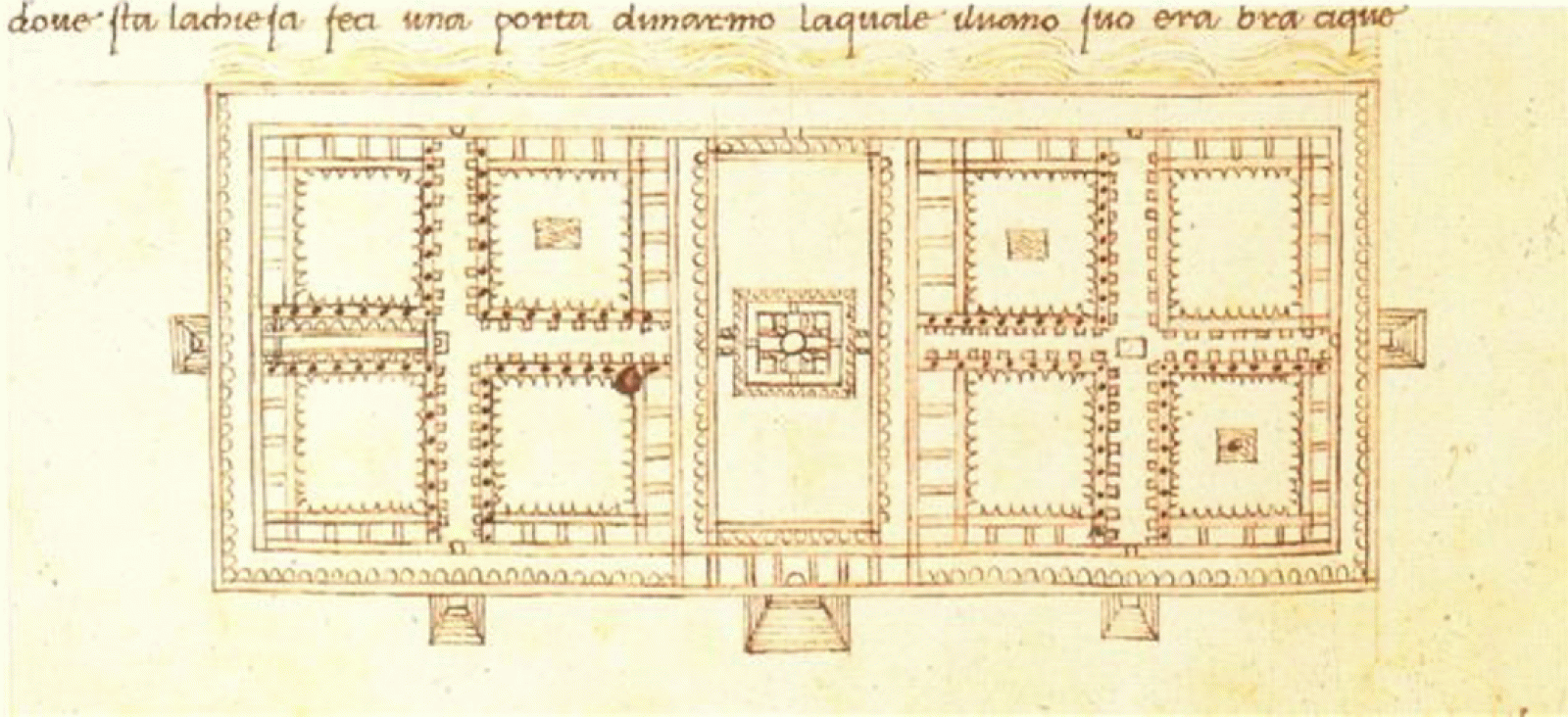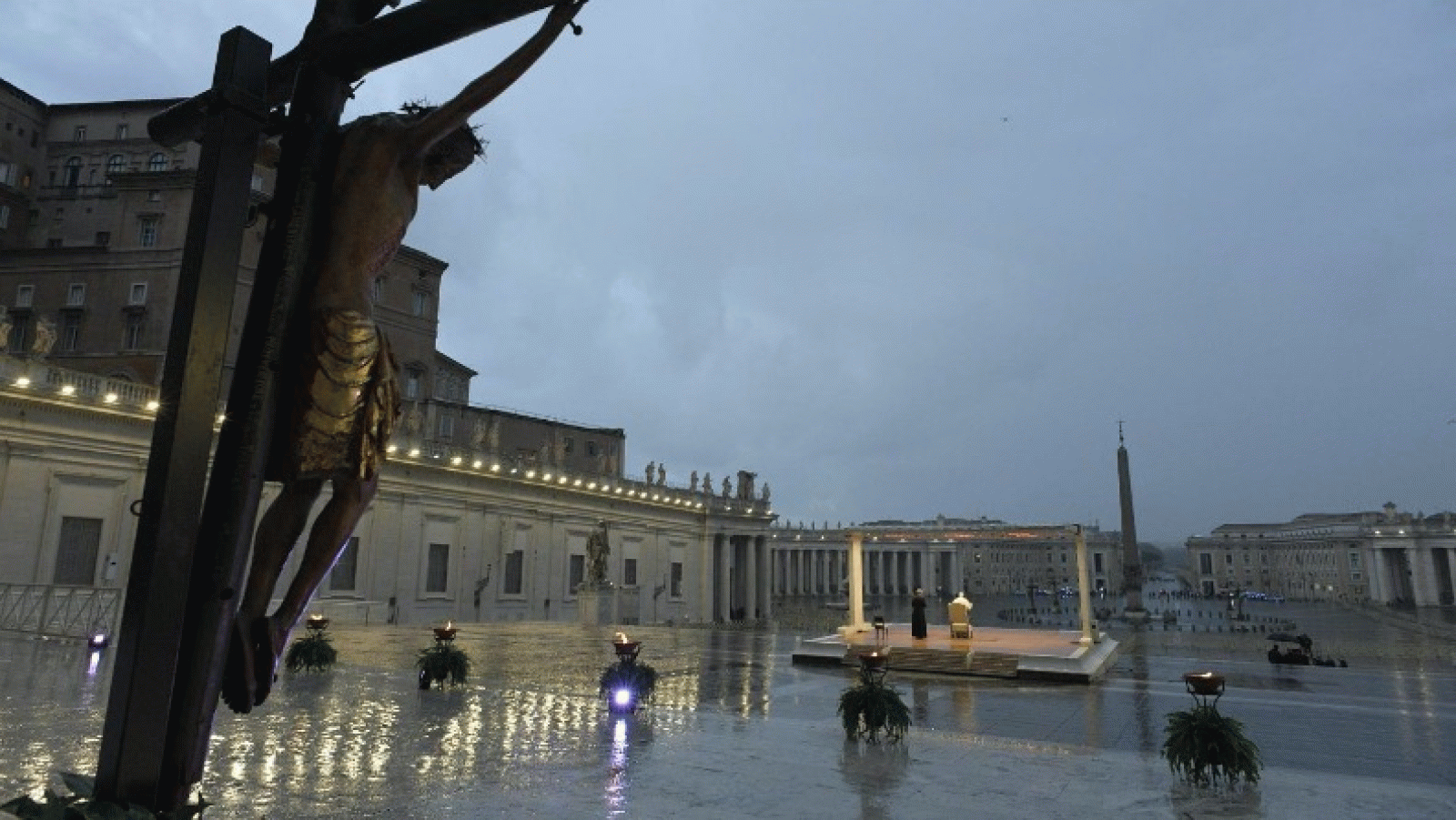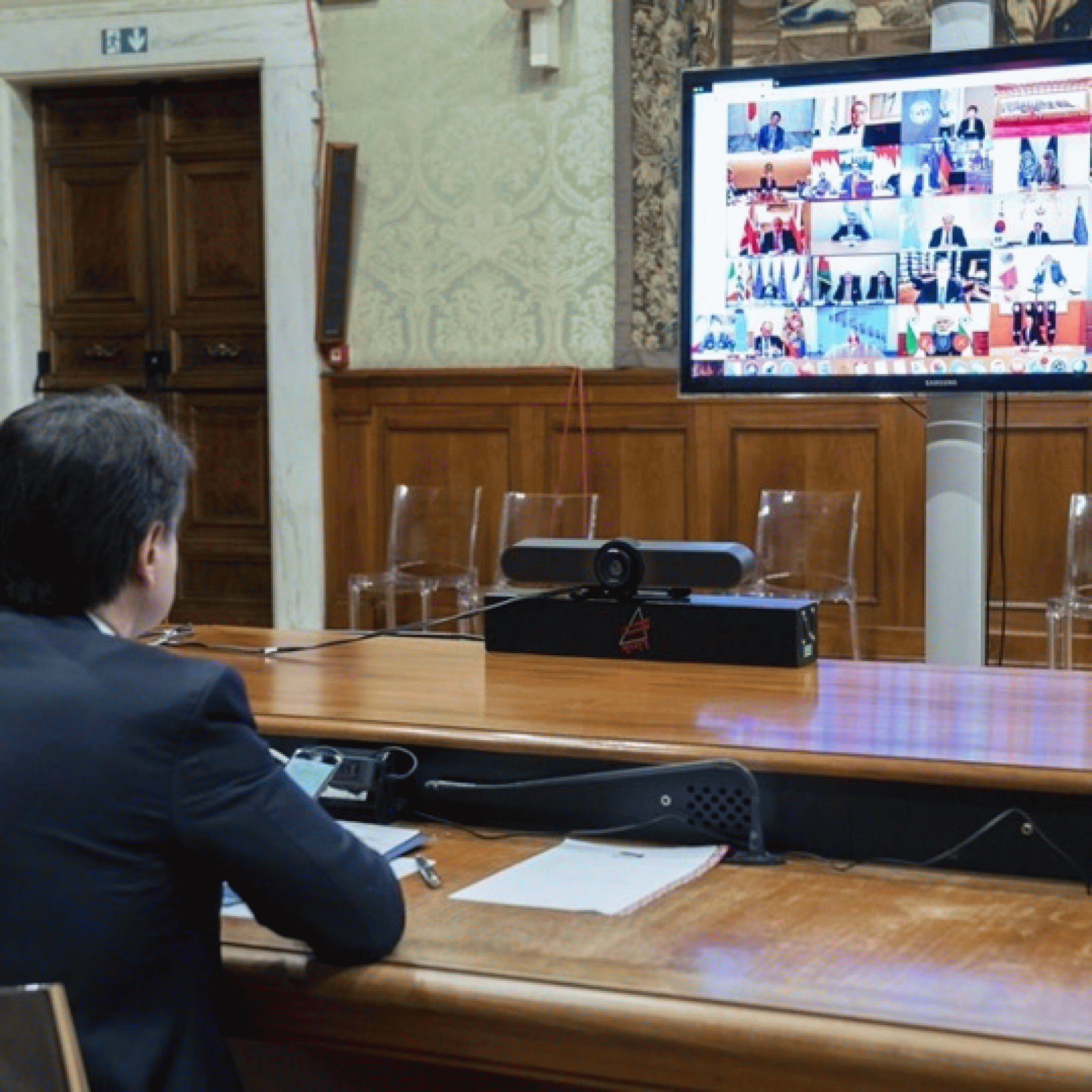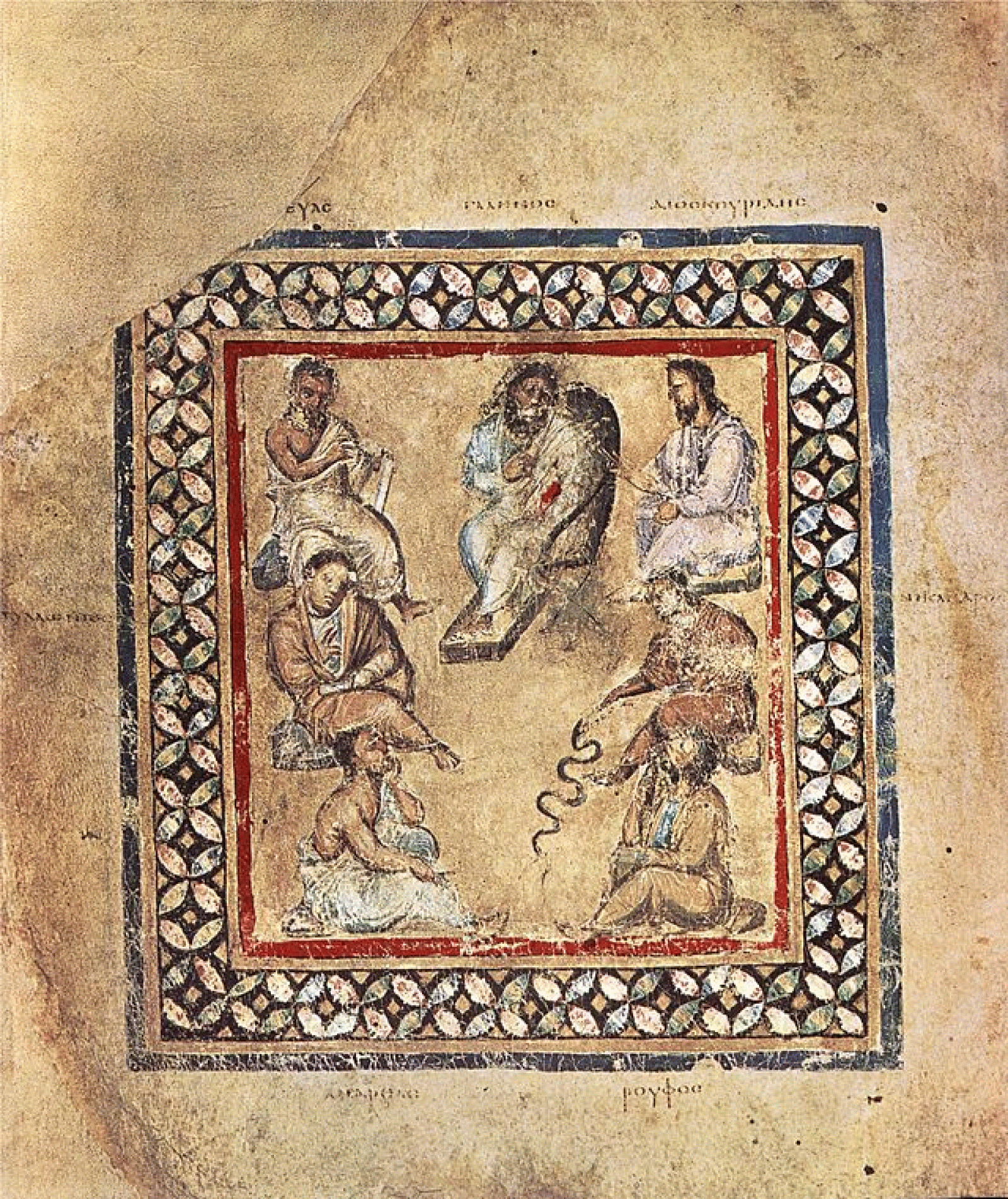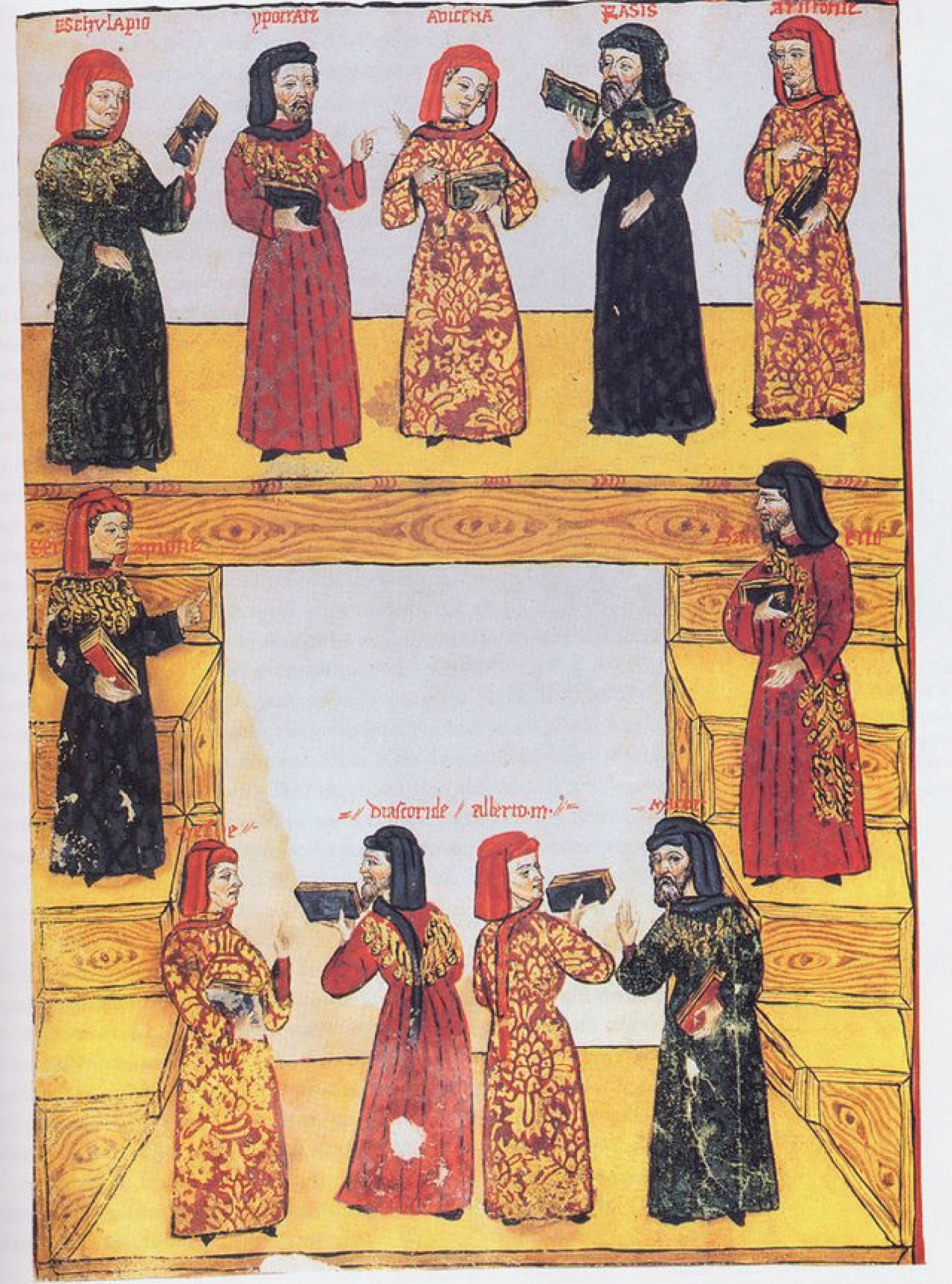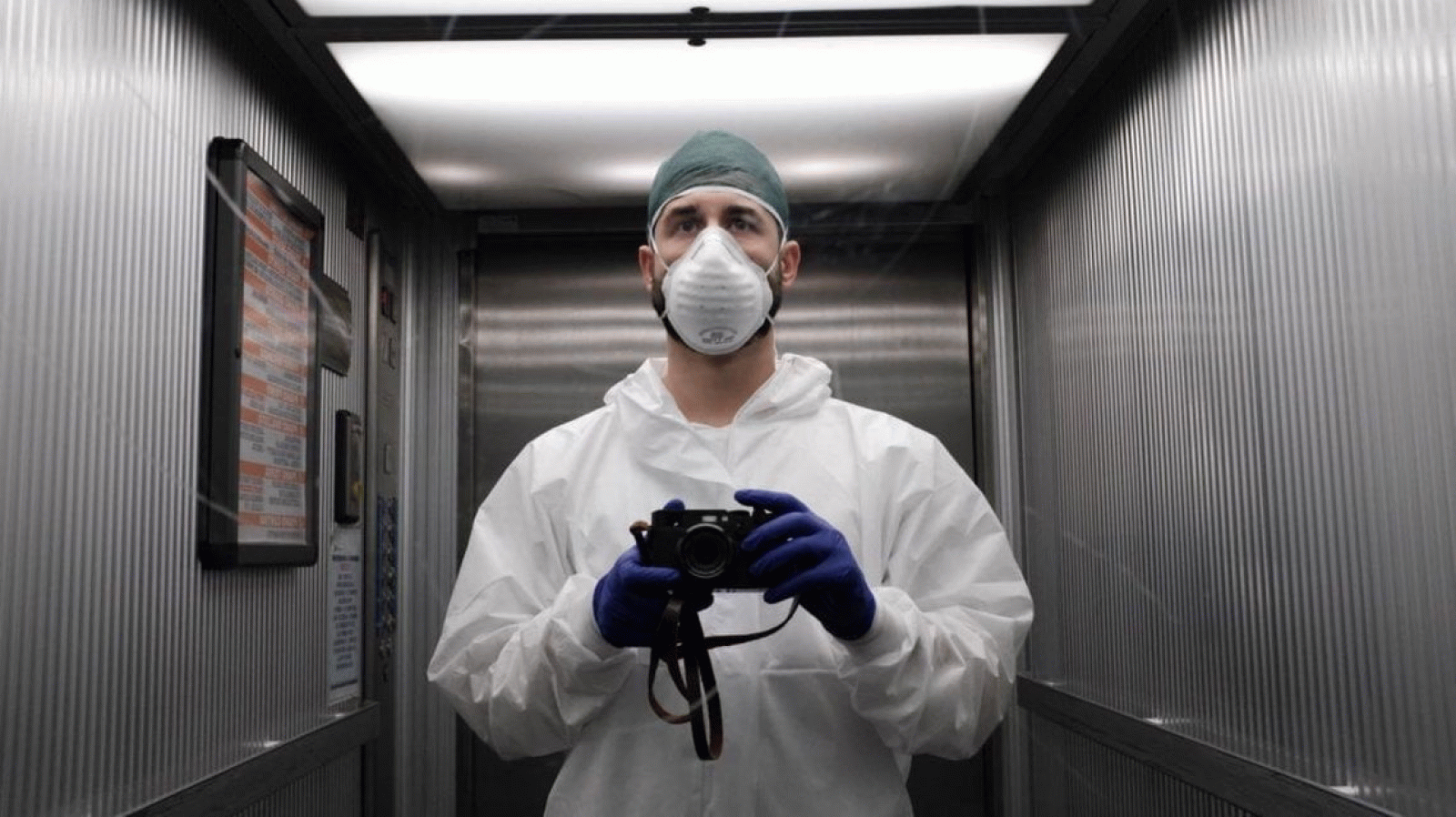Online Exhibition
Images Crisis Care
March/April 2020


On March 26, members of a non-governmental organization painted icons of the Coronavirus on the walls of a destroyed building in Idlib, Syria, in order to warn the population against the danger. The graffiti painters represented the virus with its notorious spikes, angry eyes and vampire teeth, or simply in a bad mood. / NZZ, March 28, 2020, Photo: Moawia Atrash, Imago

In this floor mosaic, Asclepius, the Greco-Roman god of healing and medicine, is landing at the shores of Kos. Modeled after sculptural representations, he is distinguished by his rod with the looping serpent. To the left, Hippocrates, head of the medical school of Kos, is waiting for the god‘s arrival. The Roman mosaic testifies to a lasting veneration and engagement with the cult and the medical school of Kos across the Mediterranean, with a mobile god of healing coming from abroad. / Mosaic, 2nd-3rd century, Kos, Archeological Museum

Facial recognition technology in public spaces, artificial intelligence, screenshot / Health, movement, technology: how does the sanitary need for social distancing cope with our conception of community, society and freedom? While this politics of emergency, security and surveillance might still show a “human face” in liberal democratic countries, this systemic need for control could dramatically (and violently) impact other governmental forms.

Huoshenshan Hospital in Wuhan, Chinese central province of Hubei, Photograph from March 2020 / What should the ideal hospital architecture look like? Since antiquity, this question has been at the heart of many architectonic and ethical treatises. Even if emergency situations require prompt and flexible architectural solutions, still today there are intense discussions about the extent to which the natural surrounding and built architecture influence the physical and psychic well-being of patients, and thus significantly contribute to healing.

This 13th-century page from a Greek manuscript was written in Calabria, Southern Italy. It displays a visual and linguistic re-elaboration and appropriation of the Hippocratic Oath, transposing it into the form of a cross. Albeit with significant changes, the text, in its antique and Christian versions, offers ethical guidelines for physicians: their obligation not to harm, but to heal the patient. First redactions of the text date back to the 4th century BCE, and are to be situated in the context of the medical school of Hippocrates of Kos. In the 15th century, the manuscript was part of the Library of Federico da Montefeltro in Urbino. From there it was used as a basis for early modern printed editions of the oath. / Manuscript, ink on parchment, Vaticanus, Urbinas Graec. 64
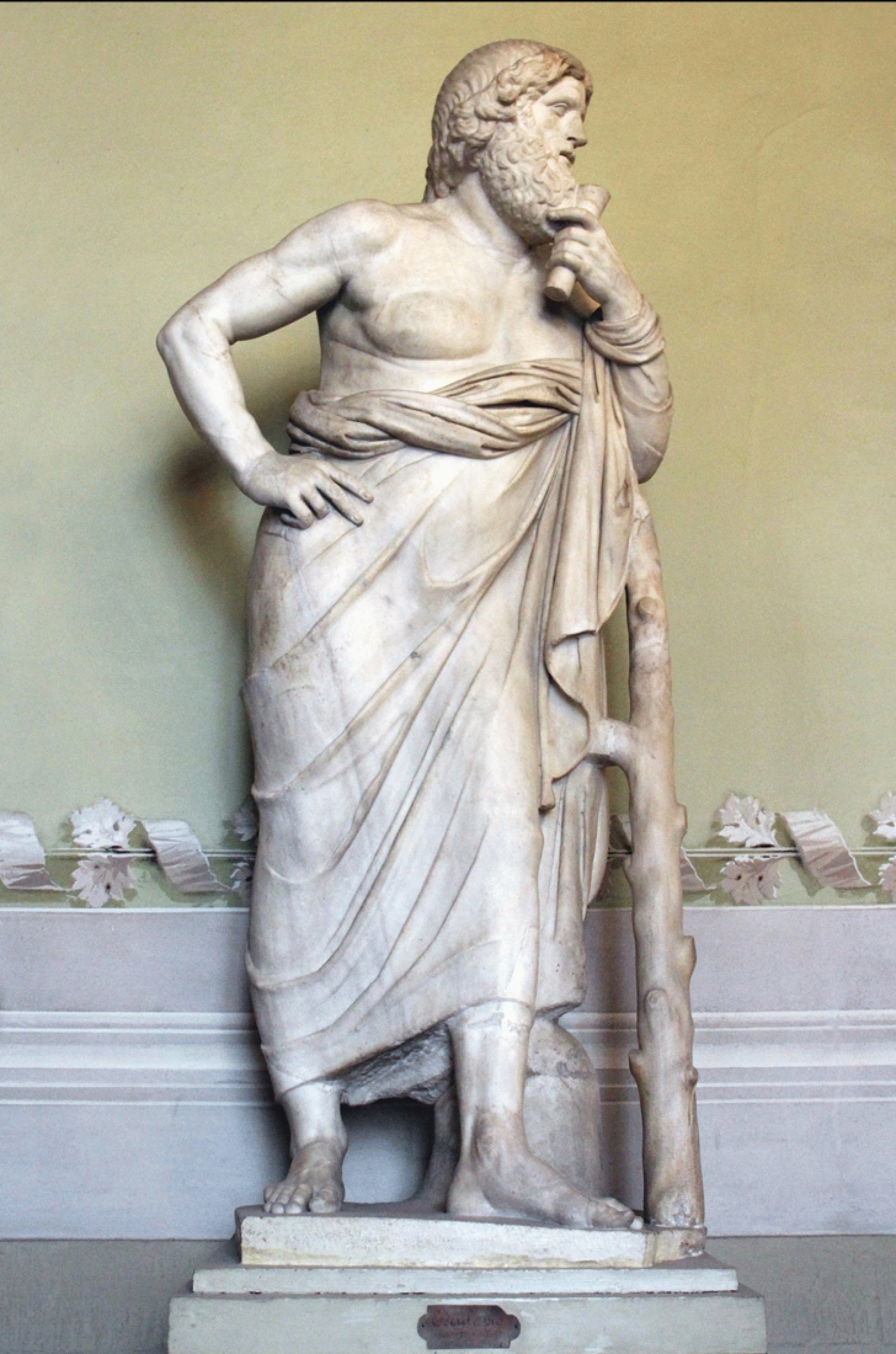
The marble sculpture of Asclepius on display at Palazzo Pitti presents the god of medicine as a thinker and philosopher. With his right hand on his hip, his head is resting on the fist of his left hand, as if caught in a moment of concentrated thought, in an otherwise relaxed elderly male body. The cult of the god and its iconographic expressions are the result of a centuries-long process of cultural transformations and appropriations, of political and religious strategies, conflicts and anxieties, that came together with the dissemination of medical knowledge or, in fact, medical techniques ('technae'). The sculpture in the Uffizi collection is a copy of an earlier (lost) prototype by the sculptor Nikeratos. It was prominently displayed and venerated at the Temple of Concordia in Rome on the Forum and was therefore widely known. There, it was paired with a figure of Hygeia, the god‘s daughter, feeding a snake. This might explain the absence of the snake in Nikeratos figuration of the god. / mid-2nd century, restoration in the 18th century, marble. Florence, Galleria delle Statue, Palazzo Pitti, OdA 1911, 669

The map of the Lazzaretto di San Rocco in Livorno represents early modern architectures of segregation. Whereas the map was drawn around 1800, and was brought to Bohemia by the former Archduke of Tuscany Pietro Leopoldo II, the represented structure itself was built much earlier. The hospital of San Rocco was constructed in 1590, within an area separated from the city by a system of water channels. It was one of three elaborate structures to organize and spatially structure quarantine in Livorno. Measures for quarantine were particularly strict in Livorno, and led to specific forms of bureaucratic organization as well as to the establishment of a permanent administrative institution, the Ufficio di Sanità. / c. 1780-1820, ink and watercolor on paper, 71 x 64 cm. Prag, Narodni Archive (see also Archivio della Regione Toscana)

THX 1138 (film), director: George Lucas, USA, 1970, screenshot (scene with the protagonist THX 1138 and a confession booth OMM 0000) / The depicted images show different manifestations of care. They invite us to reflect on the necessities and limits of this concept, and its ethical implications: This might be the altruistic care for patients in a hospital, the ascetic ideal of the cura sui or the dystopic motive of "totalitarian" care, enforced through permanent observation and imposed medication, that questions free will.

Vilhelm Hammershøi, Sunbeams or Sunshine. Dust Motes Dancing in the Sunbeams, 1900, oil on canvas, 70 x 59 cm, Ordrupgaard Museum / How porous are the boundaries between the internal and the external, the private and the public? And how endangered is the balance between solitude and belonging, withdrawal from and participation in society? Currently, the sanitary need for social distancing forces us to reflect upon these issues, and to reconsider our concepts of individuality, community and personal freedom.

Galenus: Galeni opera varia (Dresden Galen manuscript), Flemish, 1450. Dresden, Sächsische Landesbibliothek – Staats- und Universitätsbibliothek, sig.: Mscr.Dresd.Db.93 / Ancient codices were precious guardians of wisdom for centuries; the circulation of medical treatises and herbals make it evident that the importance of exchange of information and knowledge has always been existential. Yet the access to medical knowledge could be used also as an instrument of power and domination. Today the WHO provides access to crucial data for researching viruses and attempts to democratically share important facts in a globalized world via the internet.



